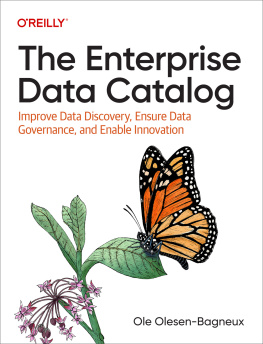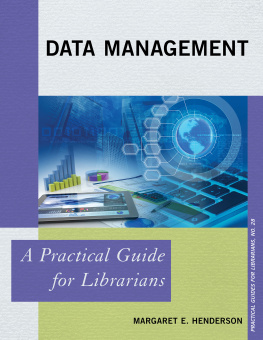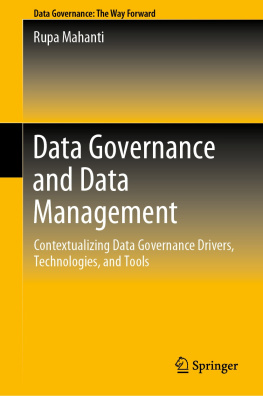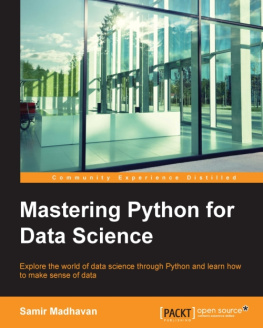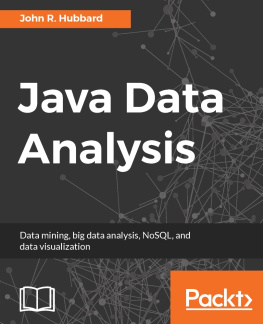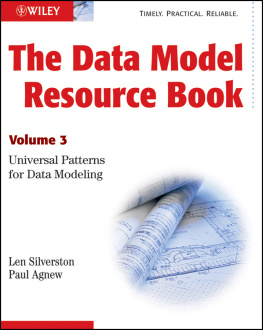Master data is the beating heart of your organization. Without it, youre dead in the water. Maintaining your master data, then, is like doing sit-ups and eating kale; you know you should, you know everything will run more smoothly if you do you may just not have gotten around to actually doing it yet. Enter our guide to SAP Master Data Governance.
Between these pages, youll find a comprehensive guide to SAP MDG, from central governance and master data consolidation to data, UI, and process modeling. Our expert author teamHomiar, Sandeep, Santhosh, Antony, Rajani, and Davidhave brought their decades of experience to bear in writing this book. Its hard to imagine a more knowledgeable team, or one more amiable about answering all of my nit-picky questions!
Notes on Usage
This e-book is protected by copyright . By purchasing this e-book, you have agreed to accept and adhere to the copyrights. You are entitled to use this e-book for personal purposes. You may print and copy it, too, but also only for personal use. Sharing an electronic or printed copy with others, however, is not permitted, neither as a whole nor in parts. Of course, making them available on the Internet or in a company network is illegal as well.
For detailed and legally binding usage conditions, please refer to the section .
This e-book copy contains a digital watermark , a signature that indicates which person may use this copy:
Notes on the Screen Presentation
You are reading this e-book in a file format (EPUB or Mobi) that makes the book content adaptable to the display options of your reading device and to your personal needs. Thats a great thing; but unfortunately not every device displays the content in the same way and the rendering of features such as pictures and tables or hyphenation can lead to difficulties. This e-book was optimized for the presentation on as many common reading devices as possible.
If you want to zoom in on a figure (especially in iBooks on the iPad), tap the respective figure once. By tapping once again, you return to the previous screen. You can find more recommendations on the customization of the screen layout on the .
Preface
Welcome to the first edition of SAP Master Data Governance for SAP PRESS. This book has been a long time coming and is intended to be a comprehensive guide to implementing central data governance scenarios using SAP Master Data Governance (SAP MDG). This overview of SAP MDG comes at the topic from both a business and technical perspective, and complements the standard SAP product documentation, including that which is available online and through IMG help. It also explains the inner workings of the solution with reference to real-life examples from SAP MDG projects. This book addresses some of the common questions raised by customers and consultants while implementing the solution.
The book serves as a reference to understand how the SAP MDG solution works. Although not intended to replace the official SAP documentation, the detailed content in this book is balanced for both functional and technical readers. This book has been written based off the authors personal project experiences. The authors have provided links to the available SAP product documentations to provide you with additional details. The chapters discuss various configuration options for each functionality as well as their corresponding enhancement options. Toward the end of the book, the concept of master data consolidation using SAP MDG is also introduced.
The scope of this book is limited to SAPs standard offerings for governing material master, business partner, customer, supplier, and financial master data domains. This book also uses the framework provided by SAP for extending the above-mentioned models or configuring a completely custom master data object. The solution extension offerings by Utopia for SAP Master Data Governance are discussed in of this book.
Who This Book Is For
This book is structured to interest a broad audience, including business analysts, techno-functional analysts, business process experts, master data experts, solution architects, technical developers, and data scientists. Its targeted for anyone who plans to implement or work on the SAP MDG solution. The book provides an overview of the SAP MDG solution and goes in depth to discuss the various enhancement options, with emphasis on central governance scenarios to help you understand the end-to-end capabilities of the solution.
How This Book Is Organized
This book is based on the SAP MDG 9.0 release. As this book is meant to provide an overview of SAP MDG configuration options, its organized based on the standard Customizing configuration path.
If youre interested in learning more about the SAP MDG, central governance scenario and its configuration options, we recommend reading this book sequentially from discusses the consolidation scenarios. The following is a summary of how this book is structured with a brief introduction to each chapter:
This chapter introduces the idea of enterprise information management (EIM) and data governance as a vendor-agnostic concept that requires a strategy. It provides an overview of key EIM solutions offered by SAP. This chapter ends with a high-level overview of SAP MDG.
This chapter discusses various architectural components of the SAP MDG solution and its deployment options. Youll learn about various aspects involved in deploying SAP MDG as a hub versus co-deployed with an operational SAP ERP solution. The key steps required for the initial setup of the SAP MDG solution, including SAP Solution Manager-based Customizing synchronization, are also covered in this chapter. The chapter provides an overview of the key master data domains that come delivered with the SAP MDG solution. Youll also be introduced to the concept of customer vendor integration (CVI). Finally, it concludes by briefly addressing SAP S/4HANA and how it affects SAP MDG.


